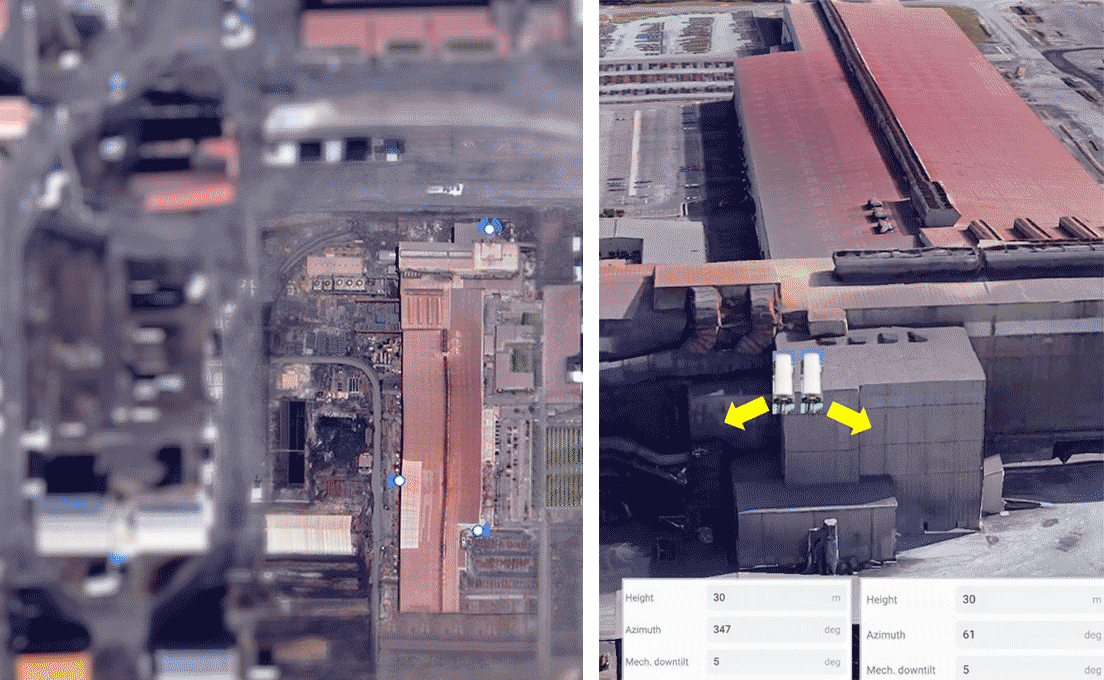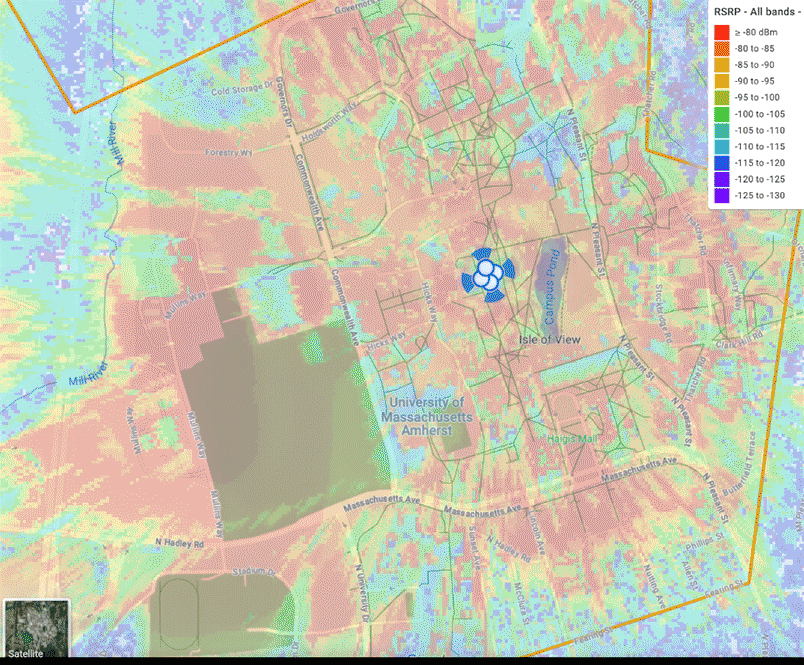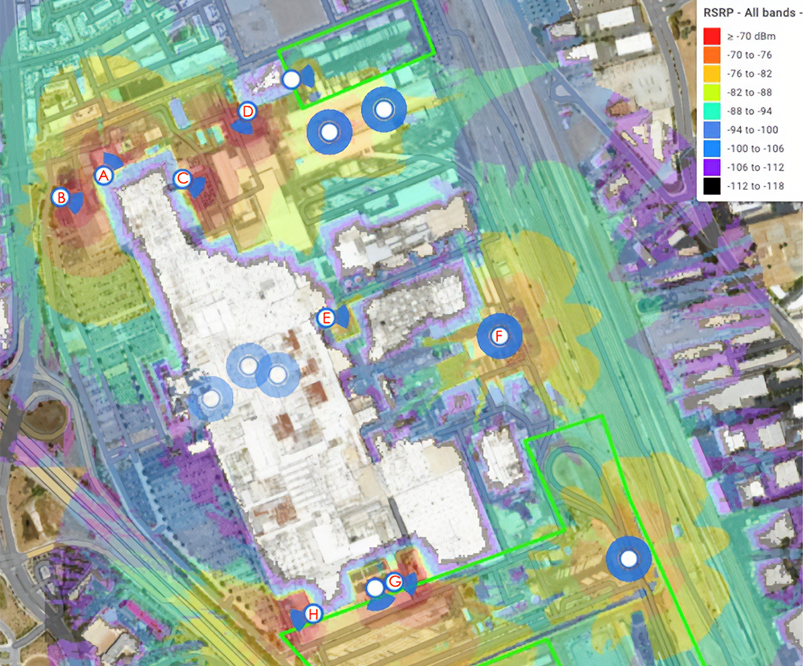Example 1: Factory campus
Let’s start with the outdoor campuses of different manufacturing facilities, shown in the two figures below. Both have a central setting of buildings and other built structures with lots of open areas, parking lots, and campus roads around. The open areas are utilized for a variety of uses including storage of raw materials or completed products, testing the product (e.g. test-driving assembled units), and temporary annexes for additional functional capacity like paintwork and quality inspection. The use cases can include tablet-based inventory tracking, managing timecard machines, and IoT devices like pumps and connected torque wrenches – all of which report up metrics and other data.

These outdoor use cases are more about reliable connectivity than capacity. This motivates us to start with a plan for a sparse deployment of sites around the campus focused on always-available coverage vs. raw throughput. Subsequently, network teams can identify areas that need more coverage and/or capacity and then add APs to ‘gap-fill’.
Drilling deeper into one customer, a discovery call identified multiple targets for antenna sites on building tops with access to the required power and backhaul. We also created a list of the ‘must-have coverage locations’ based on immediate use cases.
With the above guidance, an RF tool was used to model the sites and their coverage. The RF tool took care of frequency planning and clutter data to provide a highly accurate and predictive model.
Turning sites on/off one-at-a-time in the model and checking cumulative coverage helped to minimize the number of required sites (and thus the cost of APs + installation), while maintaining overlapping coverage for redundancy and smooth handovers. In the above factory, three sites on two main buildings were identified to place four radios with sector antennas for adequate coverage for the surrounding points of interest. A post-deployment survey was used to validate the ‘predictions’ and/or make tweaks to the tilts and azimuths of the antennas.

Example 2: Large university or factory campus
In this next example, we consider a large outdoor or enterprise campus with hundreds of acres of buildings, roads, and green areas.
A good example of this is a university campus or a large enterprise or factory campus. Use cases can vary from supporting smart lighting, security cameras, emergency 911 access, environmental sensors, private 5G backhaul for Wi-Fi in campus buses, smart delivery robots, survey drones, outdoor parking lots, inventory tracking, etc.

In this university example, we again used an RF tool to model the sites and their coverage. As with the previous customer, turning the sites on/off one-at-a-time in the model and checking cumulative coverage helped to minimize the number of sites (and cost of APs + installation), while maintaining overlapping coverage for redundancy and smooth handovers. In this campus, we chose to start with one tall building as the anchor site for placing four radios with sector antennas pointing in cardinal directions for starting coverage of the surrounding. The RF model predicted decently broad and expansive coverage with better than -105 dBm RSRP, and also identified potential areas where coverage would be a problem (blue and purple areas in the RF model).
In the first phase, the university installed this site as the starting point of coverage. Additionally, they identified a few specific points of interest shown in the figure below. Of these, the first, second and third points have good coverage but the fourth and fifth points do not due to NLOS situations. In a second phase, the university planned to add a few more APs that target these locations.

Figure 4: In this university campus example, we chose to start with one tall building as the anchor site and placed four radios with sector antennas. Based on the RF model prediction of broad and expansive coverage, the customer identified five locations of interest for good coverage. Of these the first three had good coverage from the anchor site, while the fourth and fifth were in the shadow of other buildings or trees and had poor coverage.

Figure 5: In the large factory example, radios were added over time use case by use case, until the whole outdoor around the 600-acre factory had almost continuous cellular coverage.
The picture here depicts a large factory campus where private 5G coverage was incrementally expanded by adding a few APs at a time, by use case and area, until the whole outdoor environment had reliable cellular coverage. This demonstrates how an organization can start small and continually scale as more use cases and coverage areas are added. The Highway 9 Mobile Cloud with its distributed scale-out architecture and cloud-based management allowed for this to happen very naturally.


